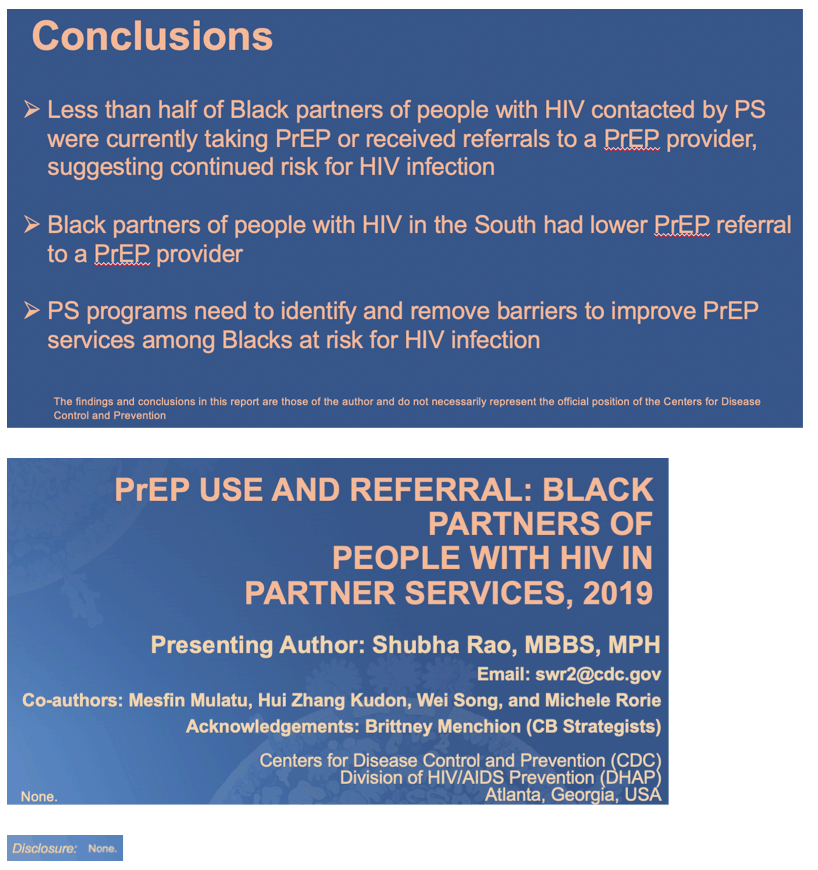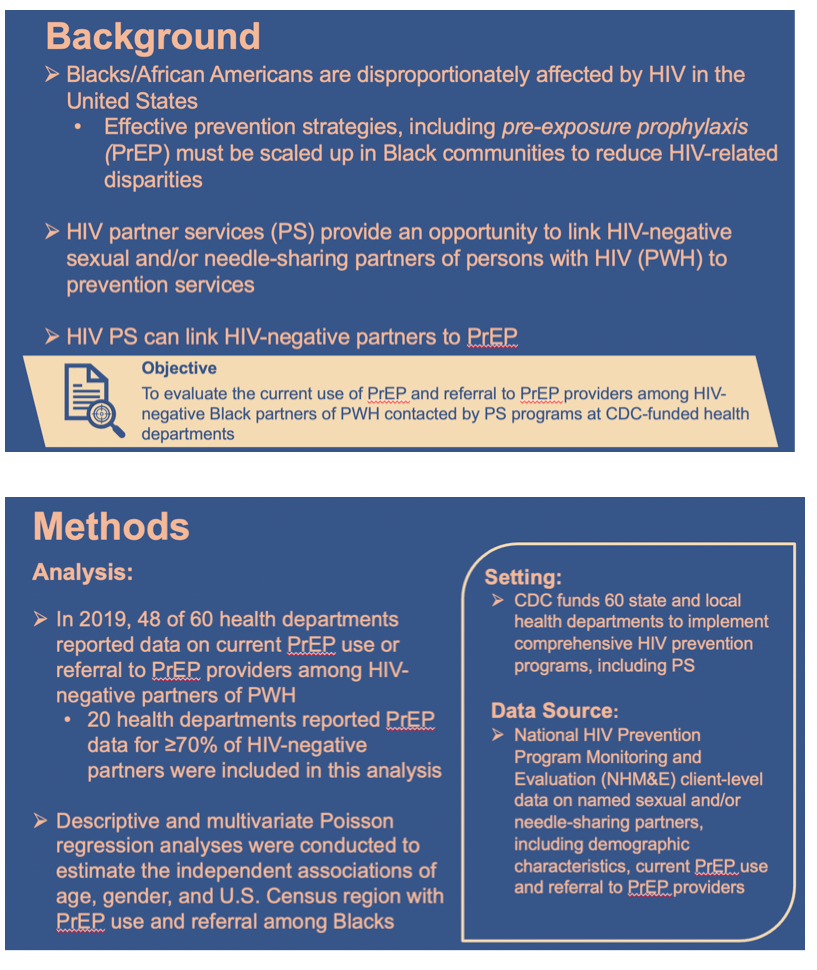 |
 |
 |
| |
PrEP USE AND REFERRAL: BLACK PARTNERS OF PEOPLE WITH HIV IN PARTNER SERVICES, 2019
|
| |
| |
CROI 2021 March 6-10 Reported by Jules Levin
Shubha Rao1, Mesfin Mulatu1, Hui Zhang Kudon1, Wei Song1, Michele Rorie1 1Centers for Disease Control and Prevention, Atlanta, GA, USA
Background: Blacks or African Americans (hereafter Blacks) are disproportionately affected by Human Immunodeficiency Virus (HIV) in the United States. Effective prevention strategies must be scaled up in Black communities to achieve the national goal of reducing HIV-related disparities. HIV partner services (PS) provide an opportunity to link HIV-negative partners to prevention services, including pre-exposure prophylaxis (PrEP). However, the extent to which PrEP services are integrated into PS programs is not well known. This analysis examines current use of PrEP and referral to PrEP providers among HIV-negative Black partners contacted by PS programs at CDC-funded health departments.
Methods: In 2019, 48 of 60 health departments reported data on current PrEP use or referral to PrEP providers among HIV-negative partners of people with HIV (PWH). Of these, 20 reported PrEP data for ≥70% of HIV-negative partners and were used in this analysis. We conducted descriptive analysis to examine the pattern of current PrEP use and referral to PrEP providers among Black partners by age, gender, and U.S. census region. In addition, we conducted multivariate Poisson regression analyses to estimate the independent associations of age, gender, and U.S. census region with PrEP use and referral among Blacks. Adjusted prevalence ratios (aPR) and 95% confidence intervals (CI) were calculated.
Results: Partner services identified 710 HIV-negative Black partners of PWH. Of these, only 52 (7.3%) reported taking PrEP at the time of their contact with PS. There were no significant differences in prevalence of current PrEP use by age, gender, and geographic region. PS offered referral to 251 of 608 (41.3%) HIV-negative Black partners who were not on PrEP. There were no significant variations in PrEP referral by age and gender. However, Black partners residing in the South were less likely (14.7%; PR=0.25, 95% CI= 0.18-0.36) and those in Midwest more likely (70.4%; PR = 1.23, 95% CI = 1.03-1.47) than those in Northeast (55.4%) to have been referred to PrEP providers.
Conclusion: Less than one-half of Black partners of PWH contacted by PS were currently taking PrEP or referred to PrEP providers, suggesting continued risk for HIV infection. Low levels of PrEP use in general, and lower levers of PrEP referral in South indicate that PS programs need to identify and remove barriers to scale-up PrEP services among Blacks at risk for HIV infection.


|
| |
|
 |
 |
|
|